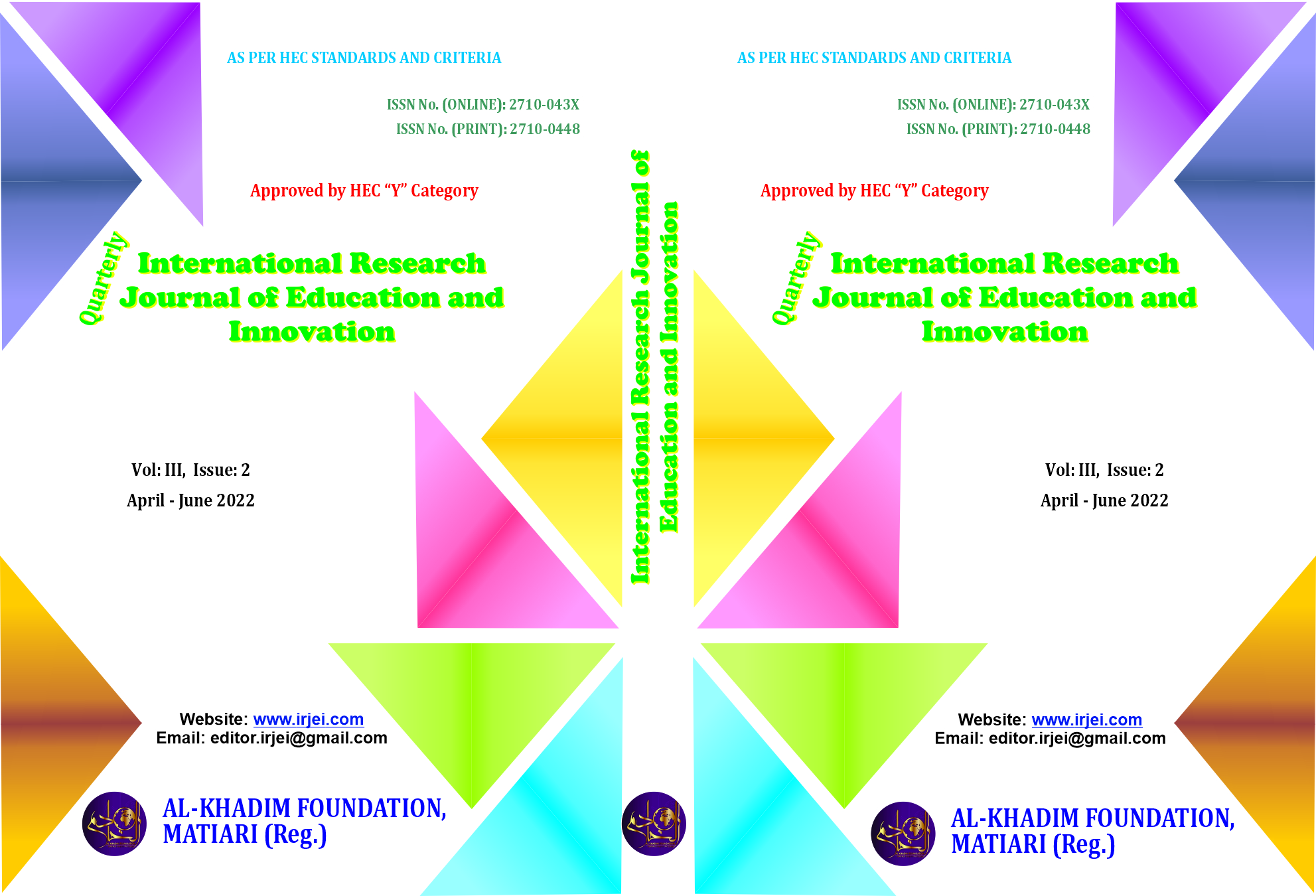A Comparative study of feministic approaches ‘My Feudal Lord’ by Tehmina Durani and ‘The Broken Wings’ by Kahlil Gibran
Keywords:
Feminism, Broken Wings, Feudal Lord, Patriarchy, Male dominance, woman rightAbstract
The different novelist penned down same subject matter according to their experiences, considerations, approaches, inner conflicts and social context. Author portrayed their feelings and thoughts and their relation with peoples, specific events, cultural and domestic system. This research examines the compare and contrast of two novels THE BROKEN WINGS by Khalil Gibran and MY FEUDAL LORD by Tehmina Durrani. Both authors have adopted feministic approach but the ideology of the two styles is different. The aim of this qualitative research is to analyze the similarities and difference between the two novels, the broken wings by Khalil Gibran & My feudal lord by Tehmina Durrani. The analysis shows that there are similarities about patriarchal system of both the novels. Both authors penned down their own thoughts and present the impact of strict and male dominant society on the Muslim women. Another aspect of differences of both the novel regarding searching for self-identity. In the Broken wings the female character and protagonist Selma seems to a weak woman and she is unable to raised her voice against patriarchal system, she is a weak daughter, a weak lover and also a weak wife. On the other hand, in My Feudal lord, Tehmina have the power of realization and by the passage of time she realizes of un justice done to her, she raised her voice against her husband Mustafa and adopt the feministic approach. Both the authors create perfect connection and unity of the plots in all parts. Both authors give a powerful message to those women who do not raise her voice against patriarchal system then they will be dying silently as in the broken wings Selma. The data collected through intersexuality of both the novels with theoretical framework of qualitative paradigm. The theory of formalism found in the novel THE BROKEN WINGS. This research finds out important elements in the characters, diction, plot, and linguistic context. Richest figurative language used by Khalil Gibran in the BROKEN WINGS. Researcher also explores theory of deconstruction in the novel MY FEUDAL LORD through tension and conflicts. Some polyphonic elements also found in MY FEUDAL LORD; narrator voice becomes the voice of Muslim women.
References
Beauvoir, S.de; and Parshley, H.M. (1997). The Second Sex, London: Vintage.
Baseer, A., Alvi, S. D., &Zafran, F. (2013). The Use of Symbolic Language in Ibsen's A Doll's House: A Feministic Perspective. Language in India, 13(3).
Durrani, T. (1995).My Feudal Lord .London: Transworld Publishers
Maguire, L. (2016). Simone de Beauvoir. Philoso? hy Talk.
Nasreen, T. (2017). Tahmima Anam’s Story. Dhaka Tribune.
Nadaf, S. S. (2015). An Analysis of Arabic Female Oppression in Nawal-El-
Saadawi’s ‘Women at Point Zero’. The Literary Herald, Vol.1, No.2:162.
Sartaj, M. (2015). In Pakistan a Disease Called Dark Skin. Dawn, Print.
Mcharak, Sana. “Kahlil Gibran and Other Arab American Prophets.” 3 Mar 2006, rousseaustudies.free.fr/articleMcharek2006, Accessed on 30 Mar. 2012.
Shantz, J. (2002). Judi Bari and ‘the feminization of Earth First!’: the convergence of class, gender and radical environmentalism. Feminist review, 70(1), 105-122.





